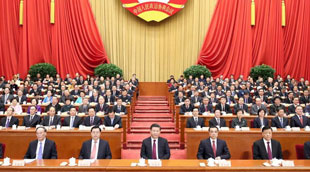
By Louis Kasekende
The main challenges appear to be structural; with inadequate investment in modern traded goods; sectors like labour intensive manufacturing and low labour productivity
Two related issues are integral to the success of Uganda’s medium term National Development Plan and its long term economic prospects. The first issue is how to ensure the external balance – the balance of payments – is sustainable over the medium to long term. The second issue relates to challenges of accelerating meaningful structural transformation in the economy. The two issues are related because a strong external performance is usually associated with structural transformation in developing countries, as demonstrated by the success of the Asian tigers. For them, industrialisation and rapid export growth have gone hand in hand. In my view, to achieve sustainable development and structural transformation, Uganda must strengthen its external performance and improve the business environment to attract more private investment into the traded goods sectors of the economy.
The external sector performance
The external sector of the economy plays a critical role in small open economies and is often the source of the greatest risks to the economy. Although Uganda has achieved successes in the external sector, notably the strong growth of tourism earnings and exports of food and manufactured products to regional markets, our external performance has deteriorated over the last 10 years.
In particular, the deficit on the current account of the balance of payments has widened from less than $300 million in 2005/06 to $2.3 billion in 2014/15, the last fiscal year. The current account deficit is forecast to widen further to $3.6 billion by 2018/19 before levelling off. The major factor driving the widening current account deficit is the increasing trade deficit The trade deficit in goods and services has almost tripled since 2005/06, from $1 billion in that year to nearly $3 billion in 2014/15. It is forecast to reach almost 3.9 billion by 2017/18. In the last fiscal year the trade deficit was 12.6 percent of GDP.
For comparison, remittances and donor grants, which are also components of the current account, provided inflows of about $1.1 billion in 2014/15, barely enough to cover a third of the trade deficit.
Why is the trade deficit so large? Although exports of goods and services have expanded quite rapidly since 2005/06, from $1.6 billion to nearly $5 billion in the last fiscal year, in absolute terms, imports of goods and services have expanded by an even greater amount. Furthermore, for the last two fiscal years, exports of goods and services have stagnated. We appear to have reached the limits of supply capacity in many of our main export industries, especially the export crops. On the other hand, our economy is heavily dependent on imports and import demand has continued to expand, driven by the growth in our economy.
In the national income accounts, the current account deficit reflects the gap between gross investment and national savings. Whereas gross investment rates have risen from 25.5 percent of GDP in 2008/09 to 31.5 percent of GDP in 2014/15, there has not been an equivalent rise in national savings rates. As such the current account deficit has widened and most of the increase in gross investment which has occurred over the last six years has been financed with external savings; mostly external loans and foreign direct investment.
Current account deficits are financed by surpluses on the financial account (net inflows of foreign capital); this is what used to be called the capital account. When foreign capital flows into Uganda, Ugandans acquire liabilities, consisting of debt or equity, to foreigners. Over the next six fiscal years, including the current one, Uganda will require cumulative surpluses on the financial account of approximately $19 billion to fund its current account deficits. This large capital inflow will have profound implications for the liabilities which Uganda will acquire to the rest of the world.
Uganda’s net international investment position; i.e. its net assets or liabilities with the rest of the world, shows that by June 2015, Uganda had net liabilities of approximately $14 billion (equivalent to about 50 percent of GDP). This is the sum of all past current account balances. Because current account deficits are forecast both to continue and to widen further over the medium term, Uganda’s net liabilities to the rest of the world are forecast to increase to $33 billion by 2020/21.
The liabilities to the rest of the world, which comprise equity and debt, must be serviced through interest payments or the remittances of profits; foreigners do not invest their capital in Uganda as an act of charity. In the last fiscal year, Uganda made net payments abroad of $700 million to service its net foreign liabilities. Given the projected increase in the country’s net international liabilities, net investment payments abroad are forecast to increase to $1.6 billion by 2020/21. Servicing foreign capital will become an increasingly onerous burden on our economy unless the capital invested by foreigners expands our capacity to earn or save foreign exchange.
Although it is optimal for a capital scarce economy to finance its development using foreign savings, no country can run trade and current account deficits indefinitely. Eventually Uganda’s trade deficits will have to be reduced sharply, both to generate the foreign exchange needed to service the country’s external liabilities and to ensure that those liabilities do not accumulate to unmanageable amounts. Reducing Uganda’s trade deficits requires that the investment which will be undertaken in Uganda’s economy over the medium term enables both an expansion in real output and that a substantial share of the increase in real output can be used to earn or save foreign exchange, through the production of exports and import substitutes.
The prospects for oil production offer an opportunity to reduce the trade deficit over the long term, and even achieve a trade surplus, but these prospects are far from guaranteed. Compared to forecasts made in 2013, current baseline forecasts for the global oil price are about $30 per barrel lower, on average, between 2020 and 2030, according to the United States Energy Information Authority. If Uganda were to produce about 70 million barrels of oil are year on average, a $30 per barrel drop in the global price of oil translates into a loss of exports earnings of about $2 billion per year for Uganda.
If the low price forecasts were to be eventually proven accurate, exploitation of Uganda’s oil would provide very little surplus after production and transport costs have been met.
It is not my intention to make a forecast of oil prices in the 2020s. Oil prices are volatile and forecasts are often wrong. But, given the uncertainty about the long term price of oil and, therefore, the magnitude of the contribution that the oil sector will eventually make to Uganda’s exports, it would be very imprudent to place too much emphasis on oil to ensure the long term sustainability of the economy’s external balance. Instead our economy needs to develop a stronger export base, from non-oil exports of goods and services. The prospects for expanding exports, especially non-traditional exports, are closely linked to the degree to which the economy achieves structural change.
Structural change in economy
Structural change is integral to socio-economic development. The process by which a low income country is lifted up to middle income status usually involves a large scale shift in the way in which people earn their living, from self-employment in low productivity traditional activities, such as subsistence farming, to wage labour in modern, profit oriented, commercial enterprises where labour productivity is both much higher than in the traditional sectors and much more dynamic: it increases rapidly through time.
Although Uganda has sustained buoyant real growth rates for nearly 25 years, the economy has achieved only a limited degree of structural change. This is evident from a number of indicators. The labour force data derived from the Uganda National Household Surveys (UNHS) indicate that the share of the working population whose primary income earning activity is agriculture fell only slightly between 2002/03 and 2012/13, from 65.5 percent to 62.4 percent. Furthermore, the 2012/13 UNHS revealed that two thirds of the agricultural labour force, and 43 percent of the entire working population, are subsistence farmers.
Structural transformation should entail labour moving into formal, private sector businesses. Although the number of registered businesses has grown rapidly, most are very small and informal: they are microenterprises. Registered businesses in Uganda, both formal and informal, employed only 1.07 million workers in 2010/11, which is only 8 percent of the country’s working population. The rest of the working population are either self-employed (the majority), are working in unregistered businesses, as casual farm labour, or as household labour.
Although the number of workers who are employed in formal sector businesses, those with five or more employees, increased between 2001/02 and 2010/11 to almost 430,000, these workers still comprise only a very small share of the working population: just 3.3 percent in 2010/11. Therefore, in terms of shifting the labour force away from traditional activities and into modern, formal, private sector businesses, Uganda has barely started the process of structural transformation.
Manufacturing is one of the drivers of structural transformation in developing economies. Formal sector manufacturing businesses employed 89,000 workers in 2010/11, which is a negligible 0.7 percent of the working population. Furthermore, the annual growth of employment in formal sector manufacturing businesses between 2001/02 and 2010/11 was only 3 percent and did not even keep pace with the growth in the overall labour force in this period. The paucity of structural transformation is reflected in the trends in labour productivity. Over the period 2002/03 to 2012/13, labour productivity grew at an average annual rate of about 2 percent. This compares very unfavourably with the industrialising economies of East Asia, which have achieved sustained labour productivity growth of around 8 percent per annum.
The lack of structural change in Uganda is related to the composition of private investment. If workers are to move out of traditional activities and into modern industries, there must be large scale private investment in the latter. Uganda has achieved reasonably good rates of private investment over the last few years, averaging between 21 and 25 percent of GDP. However, the bulk of this private investment appears to have been allocated to buildings – residential property, office blocks and shopping malls – rather than to manufacturing, agro-processing or modern farming.
As such, it provides only limited formal sector employment and contributes little to productivity growth. The Bank of Uganda conducts an annual Private Sector Investment Survey (PSIS) which covers most of the large and medium scale firms in Uganda; these are the most productive and technologically dynamic firms in the economy. In 2013, fixed capital investment by the 650 firms covered in the PSIS only amounted to 4 percent of GDP, or about 17 percent of total private investment. This level of investment is not high enough to propel structural transformation in our economy.
Link between weak external sector and lack of structural change
The structure of Uganda’s economy is dominated by household enterprises rather than by medium and large scale firms. This is an impediment to a more vibrant and competitive traded goods sector. It undermines the country’s external performance. The paucity of private investment in modern industries, especially in the traded goods sectors of the economy, is a major contributor to the weaknesses in Uganda’s external accounts and its widening trade and current account deficits. Most of the private investment in Uganda is allocated to non-traded goods sectors such as commercial and residential buildings, rather than modern traded goods industries.
Although small farmers play an important role in producing the traditional cash crops – coffee, tobacco, cotton, etc – which are used to provide the bulk of Uganda’s export earnings, diversification into more sophisticated, higher value exports such as manufactured products, processed foods and services is usually only possible with the growth of formal sector enterprises which can operate at optimal economies of scale and have the financial resources to invest in modern technology and the managerial and technical expertise to utilise it efficiently.
Similarly, to produce import substitutes for most of the manufactured goods which Uganda imports is only possible when domestic firms have acquired a minimum scale of production and technological capacity. In addition, it is growth of firms in the traded goods sectors of the economy which are usually the driving force behind structural transformation. These firms operate in highly competitive markets which are subject to continuous innovation. To compete successfully in traded goods markets, firms must be able to continuously raise their productivity and adopt new technologies. This, in turn, leads to strong growth in labour productivity.
Conclusions
Two crucial facets of our economy must be radically improved if we are to achieve our long term development objective of raising the economy to middle income status. We must strengthen our balance of payments by expanding exports of goods and services, for which we cannot rely on oil alone. This is necessary to narrow the trade and current account deficits and generate the resources to service our growing foreign liabilities. Alongside this, we must attract much more private investment into labour intensive, modern, formal sector businesses, to strengthen the growth of labour productivity. These two goals are linked; in particular because an expansion of traded goods production requires private investment in modern industries. To achieve these twin and mutually compatible goals will require focussing on four sets of policies.
First, we cannot expect to improve our balance of payments without a competitive real exchange rate. The real exchange rate is the most important relative price for producers of traded goods, because it is crucial for their profitability. Overvalued real exchange rates are a serious impediment to export growth and structural transformation. We have to resist demands to support a stronger (i.e. more appreciated) exchange rate in order to make imports cheaper, because this will harm our economy in the long run.
Second, planned large scale public sector projects which will be financed mainly with external capital are a source of currency mismatch. Some of these projects will add to Uganda’s growing external liabilities which will need to be serviced with foreign exchange payments while in the short run, they will make little contribution, even indirectly, to earning or saving foreign exchange. The currency mismatch must be managed very carefully to avoid placing a big burden on future generations.
Third, it is crucial to maintain healthy buffers of foreign exchange reserves to protect the balance of payments against adverse shocks, of the type we have suffered over the last 18 months, when export earnings stagnated and foreign direct investment declined. As our economy becomes even more dependent on inflows of foreign capital to finance its investment requirements, a sound level of foreign reserves is needed to protect our economy from shocks to both the current and capital account. It would be very imprudent to deplete our reserves to try and defend an unsustainable exchange rate. Uganda has agreed with its partners in the East African Community to hold foreign exchange reserves equivalent to 4.5 months’ of import cover, which is a prudent level. Over the medium term, we should aim to rebuild our reserves to the target agreed in the EAC.
Finally, Government should implement measures to improve the business environment if we are to attract more private investment in productive enterprises. In the 2015/16 Global Competitiveness Report, corruption was cited by respondents in the business community as the most problematic factor for doing business in Uganda, well ahead of access to finance, taxation and the supply of infrastructure. If we do not tackle this problem, our investments in public infrastructure and in deepening the financial system will not be sufficient to mobilise the private sector investment the Ugandan economy needs to drive its structural transformation.
Louis Kasekende (PhD) is the deputy governor of the Uganda central bank
 The Independent Uganda: You get the Truth we Pay the Price
The Independent Uganda: You get the Truth we Pay the Price



Indeed i conquer with Mr. Kasekende our economy requires a serious structural transformation much intended to boost the labour productivity and expanding on domestic production volumes that will have positive externality of improve balance of payment,growth in employment levels: However the only concern I can put here is let us boost potential investors that have the nation (economy ) at heart and the government advisors should make sure that such investors invest much in the trade able goods and services which are more competitive in the world market such that our returns earnings from exports are able to close off the current trade deficient. And the investment environment be though of i personally would like to up loud the tourism board for the massive publicity which is OK thus urge the fellow country men and ladies lets not only wait for the foreigners to boast the tourist industry for those tourist way back have their resources that they expect tourist too and let other relevant ministries brow a leaf from the tourist industry. Then let us much as possible fight the danger killer of our economy corruption by having a proper policy concerning the recovery of the government property or money from such corrupt officer in question this indirectly will reduce the un necessary repetitive government expenditures that spoils the economic gains.